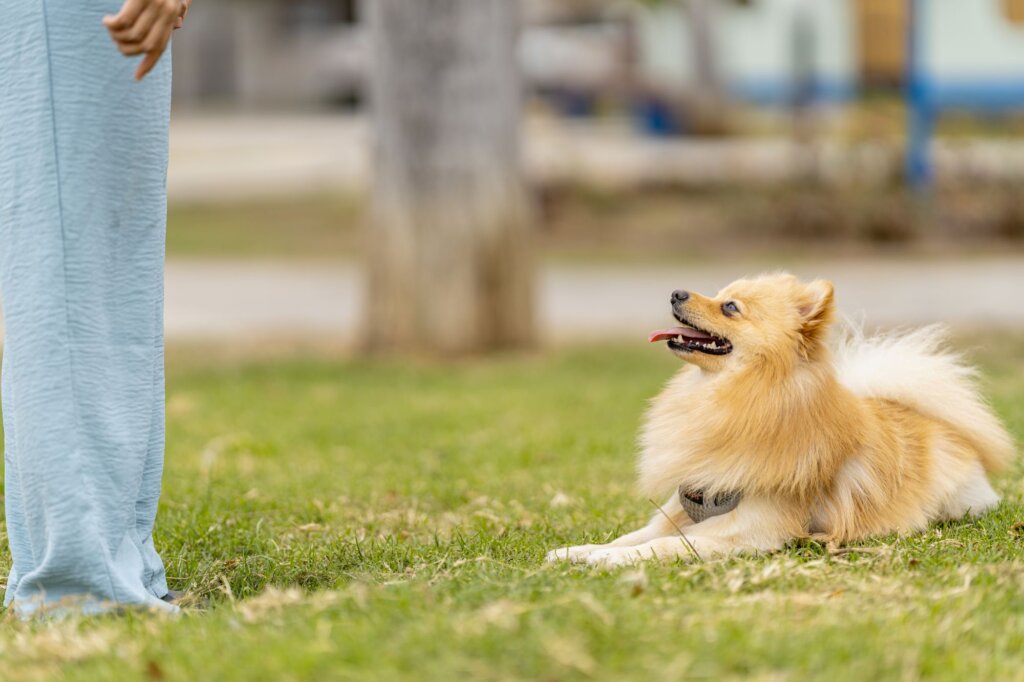Training your dog is one of the most rewarding things you can do as a pet owner. A well-trained dog is happier, safer, and more confident, but even the best-intentioned owners can make mistakes that slow progress or cause confusion.
If you’re struggling with training or not seeing the results you expected, don’t worry! Let’s go over five of the most common dog training mistakes and how to avoid them, so you and your pup can build a strong bond and a lifetime of good behavior.

Mistake 1. Being Inconsistent with Commands
One of the biggest reasons dogs struggle with training is inconsistency. If different family members use different words for the same command (e.g., saying “down” or “off” when you mean “get down from the couch”), your dog may get confused. Similarly, if you sometimes allow behaviors (like jumping) but correct them at other times, your dog might have a harder time knowing what’s expected.
How to fix it:
- Use clear, consistent commands that everyone in the household follows.
- Stick with one word per behavior (e.g., use “sit” instead of “sit down”).
- Reinforce rules every time; if jumping isn’t allowed, correct it every time.
Dogs thrive on routine and predictability, so keeping your commands and expectations consistent will make training easier and faster.
Mistake 2. Using Negative Reinforcement
Yelling, scolding, or punishing your dog for bad behavior might seem effective in the moment, but it can lead to fear, anxiety, and confusion. Dogs don’t always understand why they’re being punished, and negative reinforcement can damage the trust between you and your pup. Generally, dogs want to please their owners, and they respond much better to encouragement than punishment.
How to fix it:
- Instead of punishing bad behavior, redirect your dog to a positive behavior and reward them when they do the right thing.
- Use positive reinforcement (like treats, praise, or playtime) to encourage good behavior.
- Be patient! Dogs learn best when they feel safe and motivated.
Mistake 3. Skipping Socialization
Some owners focus on basic obedience (sit, stay, come) but forget to expose their dogs to new people, environments, and situations. A dog that isn’t properly socialized can develop fear, anxiety, or reactivity around unfamiliar people or animals.
How to fix it:
- Expose your dog to a variety of experiences early and often. Introduce them to different people, sounds, environments, and other dogs in a controlled way, like sitting on a blanket at the park or taking them to the pet store.
- Bring treats and give praise to associate new experiences with positivity.
- Avoid forcing your dog into overwhelming situations too early. Socialization should be gradual and enjoyable.
Proper socialization can help prevent behavioral issues and encourage your dog to be well-adjusted in different situations.
Mistake 4. Expecting Too Much Too Soon
Many owners expect their dogs to learn new commands quickly and get frustrated when progress is slow. Training takes time, repetition, and patience—especially for puppies or rescue dogs adjusting to a new home.
How to fix it:
- Keep training sessions short and fun. 5-10 minutes at a time works best when you’re just starting out.
- Try focusing on one command at a time before moving on to the next.
- Be realistic about expectations. Some breeds and individual dogs learn faster than others.
- Celebrate your wins! When your dog finally gets it, reward them with treats and/or praise so they know they did the right thing.
Mistake 5. Not Reinforcing Training in Different Environments
Your dog might respond perfectly to “sit” in your living room but ignore you at the park. That’s because dogs don’t automatically generalize commands across different locations.
How to fix it:
- Practice commands in various environments, like inside your home, in the backyard, on walks, and in new places.
- Increase distractions gradually; start in a quiet area before training in a busier setting.
- Be patient and reinforce the behavior until your dog listens consistently, no matter where you are.
The goal is for your dog to respond reliably in any situation, not just in familiar or distraction-free settings.
Training your dog is a process that requires patience and consistency. By avoiding these common mistakes, using positive reinforcement, and setting realistic expectations, you and your pup will be set up for success.